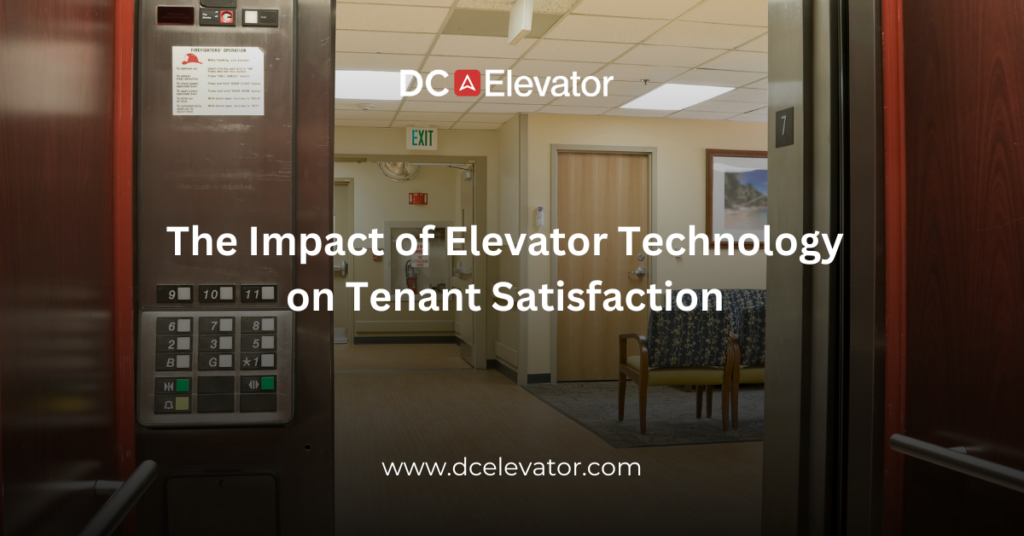Elevators are more than just a mode of transportation within buildings; they significantly impact tenant satisfaction and overall building experience. From speed and reliability to aesthetics and accessibility, elevator technology plays a crucial role in influencing how tenants perceive a building. In this blog post, we will explore how modern elevator technology affects tenant satisfaction and what building managers can do to optimize the tenant experience.
How Elevator Technology Influences Tenant Satisfaction
Elevator technology influences tenant satisfaction in several key areas:
- Reliability and Performance: Frequent breakdowns or slow service can frustrate tenants and create a negative impression of the building.
- Aesthetics and Comfort: Modern, well-maintained elevators with appealing interiors enhance the overall experience for tenants and visitors.
- Accessibility Features: Elevators with accessibility features improve usability for all, including those with disabilities, elderly tenants, and families with strollers.
- Efficiency and Speed: Elevators that operate efficiently and minimize wait times help tenants move through the building quickly and comfortably.
- Safety and Security: Elevators equipped with safety features such as emergency communication systems contribute to a sense of security for tenants.
Key Factors in Elevator Technology that Impact Satisfaction
1. Elevator Speed and Efficiency
Speed and efficiency are among the most noticeable features for tenants. Slow elevators can cause delays, especially during peak times like morning rush hours or lunchtime in office buildings.
- Impact: Fast and efficient elevators improve the flow of people, reducing congestion in lobbies and minimizing wait times.
- Consideration: Building managers should assess traffic patterns and adjust elevator operations to meet tenant demand during peak hours.
2. Ride Comfort and Smooth Operation
A smooth and comfortable ride is essential to the tenant experience. Elevators that jerk or make excessive noise can cause discomfort or even anxiety among passengers.
- Impact: Elevators that provide a quiet and smooth ride contribute positively to tenant satisfaction and reduce complaints.
- Consideration: Regular maintenance and upgrades to elevator components can help maintain a smooth operation and address any issues that affect ride quality.
3. Aesthetics and Modernization
The appearance of elevators, including cab design, lighting, and control panels, plays a role in the tenant’s perception of the building.
- Impact: Modern and well-designed elevators enhance the overall aesthetic of the building and create a positive impression on tenants and visitors.
- Consideration: Investing in updated cab interiors, lighting, and user-friendly controls can significantly enhance tenant satisfaction.
4. Accessibility and Usability
Elevator technology should cater to all users, including those with special needs. Features like Braille buttons, audible signals, and spacious cabs accommodate a wider range of tenants.
- Impact: Elevators that are accessible and easy to use for everyone, including individuals with disabilities, elderly tenants, and families, contribute to a more inclusive environment.
- Consideration: Building managers should ensure that elevators meet accessibility standards and provide clear signage and controls.
5. Safety and Security Features
Safety is a top priority for tenants, and elevators equipped with safety features enhance their sense of security.
- Impact: Features like emergency phones, clear instructions, and reliable door sensors make tenants feel safe while using the elevators.
- Consideration: Regular safety checks and clear communication about emergency procedures can help maintain tenant confidence.
Enhancing Tenant Satisfaction through Elevator Technology
1. Regular Maintenance and Upgrades
Proactive maintenance and timely upgrades are essential to keep elevators running smoothly and efficiently.
- Action: Schedule regular maintenance checks and plan for upgrades when necessary to improve performance and aesthetics.
- Benefit: Well-maintained elevators minimize downtime and enhance the overall experience for tenants.
2. Incorporate Feedback from Tenants
Listening to tenant feedback can provide valuable insights into what improvements are needed.
- Action: Conduct surveys or set up a system for tenants to report issues or suggestions related to the elevators.
- Benefit: Addressing tenant concerns promptly can lead to higher satisfaction and improved building reputation.
3. Invest in Modernization
Upgrading older elevator systems to incorporate modern features can significantly boost tenant satisfaction.
- Action: Consider modernization projects that improve speed, aesthetics, and accessibility.
- Benefit: Modern elevators can transform the tenant experience, making the building more attractive to current and prospective tenants.
Conclusion
Elevator technology has a profound impact on tenant satisfaction, influencing how tenants perceive and interact with the building. By focusing on reliability, comfort, aesthetics, accessibility, and safety, building managers can ensure that their elevators contribute positively to the tenant experience. Investing in modern elevator technology and maintaining high standards of service can enhance tenant satisfaction and set a building apart from its competitors.
